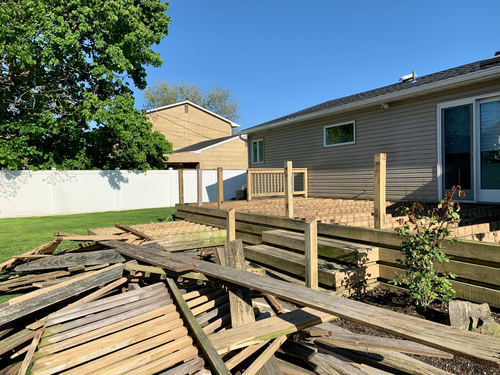
auger boring machine
In the world of modern construction and utility installation, precision, efficiency, and reliability are more important than ever. One piece of equipment that has stood the test of time in underground infrastructure projects is the auger boring machine. Whether you’re installing pipelines beneath roads, railways, or existing structures, selecting the right auger boring machine can make the difference between a smooth operation and an expensive delay.
Auger boring machines are essential in trenchless construction, offering a low-impact method of horizontal boring that minimizes surface disruption. However, not all machines are created equal, and understanding which model and configuration best fit your project needs is crucial.
This article explores the key considerations to keep in mind when choosing an auger boring machine, including project scope, soil conditions, bore diameter, equipment capabilities, and budget constraints.
Understanding the Basics of Auger Boring
Before diving into machine selection, it’s helpful to understand what an auger boring machine is and how it works. At its core, an auger boring machine performs horizontal boring by rotating a cutting head at the front of a casing pipe. Spoil is transported back through a rotating auger to the entry pit, allowing for simultaneous excavation and casing installation.
This method is ideal for installing steel casing under highways, railroads, or environmentally sensitive areas where open trenching is not feasible. The equipment is typically launched from a shaft or pit and can bore distances ranging from a few feet to hundreds of feet, depending on the setup.
Key Factors to Consider When Choosing an Auger Boring Machine
1. Project Size and Bore Diameter
One of the most important factors when choosing an auger boring machine is the size of your project. Larger projects with bigger casing diameters (up to 60 inches or more) and longer bore lengths require machines with higher thrust and torque capabilities.
For smaller utility projects, such as water or gas line installations under roads, a compact auger boring machine with lower horsepower might suffice. On the other hand, large-scale infrastructure projects involving extensive pipe diameters or long bore distances need more robust equipment capable of handling larger loads and greater forces.
Before purchasing or renting, review the machine’s specifications, including its maximum bore diameter, thrust force, and torque output.
2. Soil and Ground Conditions
Not all auger boring machines perform equally across different soil types. The nature of the ground—whether it’s clay, sand, gravel, rock, or a mixture—plays a significant role in selecting the right machine.
For softer soils like clay or silt, a standard cutting head and auger system may be sufficient. However, in harder or more abrasive ground such as cobble or fractured rock, you’ll need an auger boring machine equipped with reinforced cutting heads and high-torque drives.
Some machines also offer optional steering systems or guidance systems, which can be especially helpful when navigating challenging soil conditions or needing high bore path accuracy.
3. Machine Power and Capacity
Power is a critical aspect when selecting any heavy-duty equipment. Auger boring machines come with a wide range of engine types, typically diesel-powered, with varying horsepower ratings.
Machines with higher horsepower engines offer better performance under tough soil conditions and for long-distance bores. Similarly, torque output is vital for rotating the auger and cutting head effectively through soil and rock. If your project involves thick-walled casing or long bore distances, opting for a high-capacity model will help ensure steady progress and minimize stalling or equipment strain.
4. Available Jobsite Space
Auger boring operations begin from a launch pit, and the size of this pit must accommodate the machine and casing pipe. If you’re working in a confined urban environment or a restricted area, a smaller, more compact auger boring machine may be necessary.
Many modern auger boring machines are designed with space-saving configurations, including skidded or trailer-mounted frames that can be maneuvered more easily in tight quarters. These compact models are well-suited for municipal or residential jobs where space is at a premium.
5. Ease of Transport and Setup
Another logistical consideration is how easily the machine can be transported and assembled at the jobsite. Some auger boring machines are built for quick disassembly, allowing crews to move them between jobs efficiently.
If your team frequently moves from site to site or handles multiple small projects, choosing a machine that offers easy mobility can save valuable time and labor costs.
6. Technology and Control Systems
Technological advancements in boring equipment have made operations safer and more precise. Modern auger boring machines may come equipped with features such as laser-guided steering, load-sensing hydraulics, and real-time monitoring of torque and thrust.
These tools not only improve bore accuracy but also help operators identify potential issues before they become costly problems. While these machines may come at a premium price, the long-term benefits in reduced downtime and increased productivity often justify the investment.
7. Support and Spare Parts Availability
Even the most reliable machines will require maintenance and occasional repairs. When choosing an auger boring machine, it’s essential to consider the manufacturer’s reputation for service support and parts availability.
Partnering with a vendor or manufacturer that offers responsive technical assistance, training programs, and a solid inventory of replacement parts ensures that your equipment stays operational and minimizes downtime.
8. Cost vs. Long-Term Value
While budget constraints are always part of the decision-making process, it’s important not to choose a machine based solely on upfront cost. A lower-priced auger boring machine that lacks durability, service support, or adequate capacity can end up costing more in the long run through repairs, delays, and lost productivity.
Instead, consider the total cost of ownership, including maintenance, fuel consumption, training needs, and expected service life. Investing in a high-quality, well-supported machine often delivers better long-term value.
Conclusion
Choosing the right auger boring machine for your infrastructure project requires careful planning and a clear understanding of your operational needs. From the size and scope of the bore to soil conditions and equipment capacity, every detail matters. The right machine will not only help you complete the job efficiently but also ensure safety, reliability, and cost-effectiveness over time.



